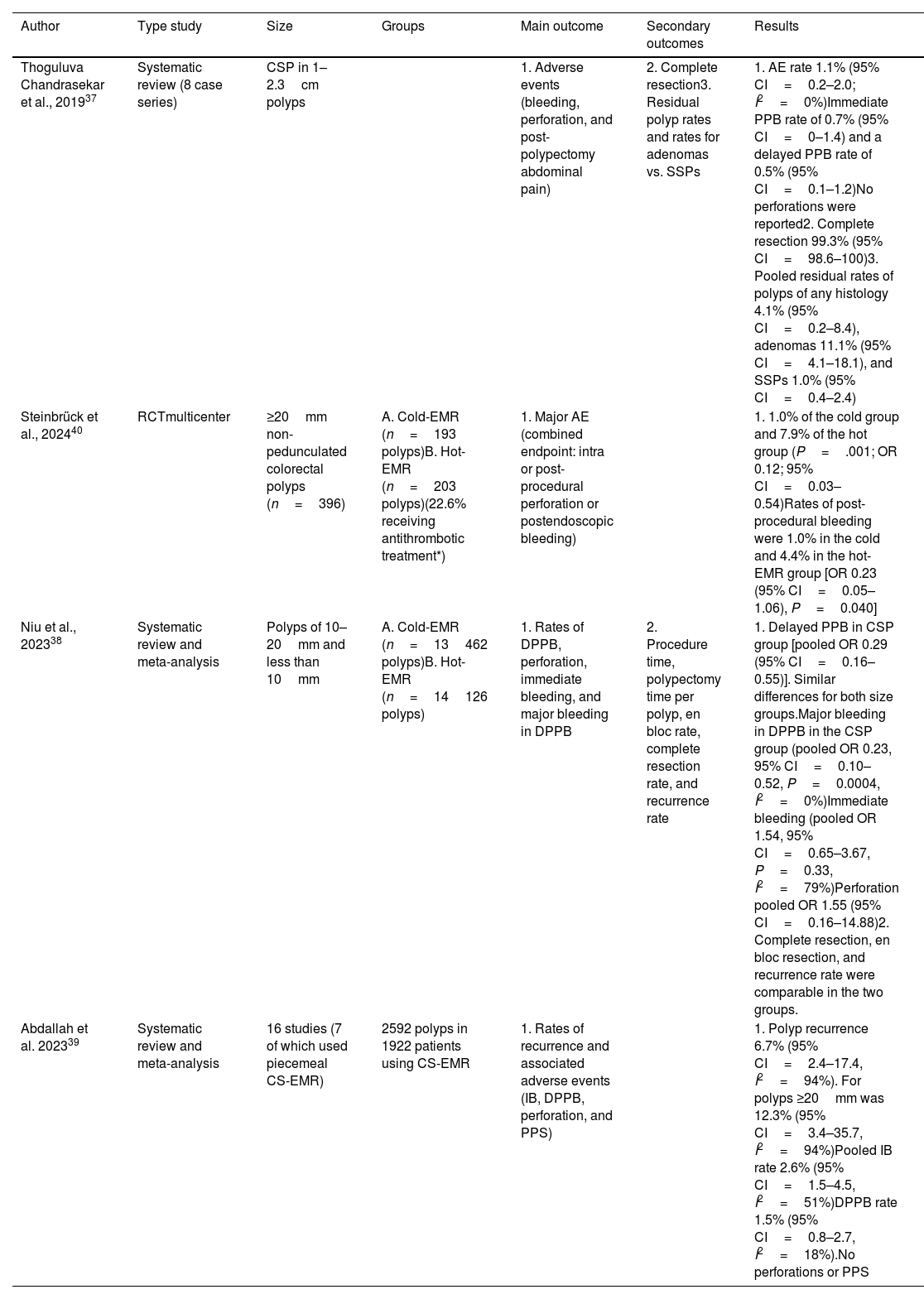Patients undergoing colonoscopy are increasingly taking antithrombotic medication. These patients, who are generally older, also have a higher prevalence of colon polyps. Therefore, it is general practice to modify or discontinue antithrombotic treatment before colonoscopy, to reduce the risk of post-polypectomy bleeding (PPB). However, this modification increases the risk of thrombotic events. Currently, the main clinical guidelines recommend cold-snare resection for polyps smaller than 10mm because of its better safety profile, especially in reducing post-polypectomy bleeding. This reduced PPB rate could open the door to maintaining antithrombotic drugs in patients undergoing colonoscopy. This review aims to evaluate the evidence available so far that may support a modification of current guidelines on the management of antithrombotic drugs in the periendoscopic period.
Cada vez más pacientes que se someten a una colonoscopia toman medicación antitrombótica. Estos pacientes, que en general son más añosos, también tienen una mayor prevalencia de pólipos de colon. Por lo tanto, es una práctica habitual modificar o suspender el tratamiento antitrombótico antes de la colonoscopia para reducir el riesgo de hemorragia pospolipectomía (HPP). Sin embargo, esta modificación aumenta el riesgo de eventos trombóticos. Actualmente, las principales guías clínicas recomiendan la resección con asa fría para pólipos menores de 10mm debido a su mejor perfil de seguridad, especialmente en la reducción de la hemorragia pospolipectomía. Esta tasa reducida de HPP podría abrir la puerta a mantener los fármacos antitrombóticos en pacientes sometidos a colonoscopia. Esta revisión tiene como objetivo evaluar la evidencia disponible hasta el momento que pueda apoyar una modificación de las guías actuales sobre el manejo de los fármacos antitrombóticos en el período periendoscópico.










